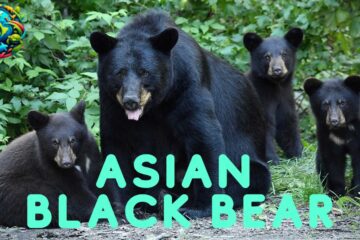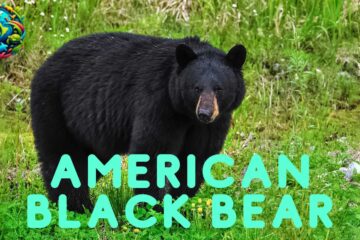Barasingha: Swamp Deer of India
Barasingha: Swamp Deer of India
Introduction
The barasingha, also known as the swamp deer, is a majestic species native to the Indian subcontinent. Renowned for their impressive antlers, which can have up to twelve points, and their preference for swampy habitats, these deer are an iconic presence in the wetlands and grasslands of India and Nepal. The barasingha plays a crucial role in its ecosystem and holds significant cultural importance. This article explores the fascinating world of barasingha, covering their habitats, physical characteristics, behaviors, and much more.
Amazing Facts
Barasingha possess numerous intriguing attributes:
- Distinctive Antlers: Males, or stags, have large, multi-pointed antlers that can reach up to 39 inches (100 cm) in length, often with twelve or more points.
- Swampy Habitats: They are adapted to living in swampy and marshy areas, as well as grasslands and riverine forests.
- Grazing Behavior: Barasingha are primarily grazers, feeding on a variety of grasses and aquatic plants.
- Social Structure: They live in herds that can range from small groups to larger aggregations during the breeding season.
- Conservation Status: Once widespread, barasingha populations have declined due to habitat loss and hunting, and they are now listed as vulnerable by the IUCN.
Habitat and Food
These adaptable creatures thrive in specific environments that cater to their unique lifestyle.
Habitat:
- Found primarily in the Indian subcontinent, including India and Nepal.
- They inhabit wetlands, marshes, grasslands, and riverine forests.
- Barasingha prefer areas with abundant water sources and dense vegetation, which provide cover from predators and access to food.
Food:
- Herbivorous, with a diet consisting of grasses, aquatic plants, and occasionally leaves and fruits.
- During the monsoon season, they graze on lush grasses in flooded areas.
- In the dry season, they may browse on shrubs and fallen leaves.
- Barasingha play a crucial role in their ecosystems by aiding in seed dispersal and maintaining plant diversity.
Appearance
Barasingha are known for their impressive and distinctive appearance. Key characteristics include:
- Size: Adults stand about 4 to 4.5 feet (120 to 135 cm) tall at the shoulder and weigh between 375 to 620 pounds (170 to 280 kg).
- Color: Their coat is typically reddish-brown or golden-brown, with lighter underparts and a white tail. They have a dense, woolly coat in the winter.
- Antlers: Males have large, multi-pointed antlers that can have up to twelve or more points. These antlers are shed and regrown annually.
- Build: They have robust, muscular bodies with long legs adapted for wading through swampy terrain.
- Face: They have a long, slender face with large, expressive eyes and prominent ears.
Types/Subspecies of Barasingha
There are three recognized subspecies of barasingha, each adapted to their specific environments:
- Northern Swamp Deer (Rucervus duvaucelii duvaucelii): Found in northern and central India and Nepal, known for its slightly larger size and preference for swampy habitats.
- Southern Swamp Deer (Rucervus duvaucelii branderi): Inhabits central India, particularly in the Kanha National Park, recognized by its smaller size and darker coat.
- Eastern Swamp Deer (Rucervus duvaucelii ranjitsinhi): Native to the northeastern region of Assam, known for its lighter coat and preference for grasslands and riverine forests.
Predators and Threats
Despite their size and strength, barasingha face various natural and human-induced threats that impact their survival.
Natural Predators:
- Tigers: Tigers are the primary predators, using stealth and power to hunt these deer.
- Leopards: Leopards also prey on barasingha, particularly targeting younger or smaller individuals.
- Wild Dogs: Packs of dholes (wild dogs) can pose a significant threat, using teamwork to hunt.
- Crocodiles: In areas near water bodies, crocodiles may prey on these deer, especially when they come to drink.
Threats:
- Habitat Loss: Urban development, agriculture, and wetland drainage reduce available habitats.
- Human-Wildlife Conflict: They often come into conflict with humans when they raid crops or are involved in vehicle collisions.
- Poaching: Illegal hunting for their meat and antlers can threaten specific populations.
- Climate Change: Alterations in weather patterns and habitat conditions due to climate change can impact food availability and migration patterns.
Mating
Barasingha exhibit unique and complex mating behaviors, essential for the continuation of their species.
- Breeding Season: The rut typically occurs from November to January.
- Courtship Displays: Males engage in courtship behaviors such as vocalizations, antler displays, and physical sparring to attract females.
- Territoriality: During the rut, males become highly territorial and will fight rivals to maintain dominance and access to females.
- Gestation and Birth: After a gestation period of about 240 to 250 days, females give birth to one or two fawns. Fawns are hidden in dense vegetation for protection and are weaned by the age of 6 to 8 months.
How They Communicate
Barasingha use various methods to communicate with each other, particularly during mating and social interactions.
Vocalizations:
- Barks and Grunts: Used to communicate alarm, establish dominance, and maintain contact within herds.
- Rut Calls: Males produce loud calls during the rut to attract females and establish dominance.
Body Language:
- Posturing: Males use body postures, such as raised hackles, tail positioning, and ear movements, to convey aggression, submission, or readiness to mate.
- Antler Displays: Males use antler displays and sparring to establish dominance and attract mates.
Chemical Signals:
- Scent Marking: They use scent glands located on their legs and face to mark territory and signal reproductive status.
Religious and Cultural Significance
Barasingha hold significant symbolic and cultural importance in various societies:
Indian Culture:
- Spiritual Symbol: In Hindu mythology, barasingha are associated with various deities and are considered symbols of grace, beauty, and fertility.
- Conservation Symbol: They are often used in conservation campaigns to raise awareness about wildlife protection and the importance of preserving wetland habitats.
Modern Symbolism:
- Popular Culture: These animals appear in various forms of media, from literature and art to documentaries, symbolizing the rich biodiversity and natural beauty of Indian wetlands.
Movies Featuring These Majestic Creatures
Barasingha have been featured in various films and documentaries, showcasing their behaviors and the challenges they face:
- “Kanha: Protecting the Swamp Deer” (2019): A documentary focusing on the conservation efforts in Kanha National Park to protect the barasingha and its habitat.
- “The Deer: Jewel of Indian Forests” (2017): A documentary that explores the lives of various deer species in India, including the barasingha.
- “Planet Earth II” (2016): The “Grasslands” episode includes stunning footage of these deer in their natural habitat, showcasing their interactions with other wildlife.
- “Wild India” (2012): A documentary series that explores the diverse wildlife of India, featuring segments on these deer and their survival strategies.
Pronunciation in Different Languages
The term for these majestic creatures is pronounced differently across various languages, reflecting linguistic diversity:
- English: /bɑːrəˈsɪŋɡə/
- Spanish: /ciervo de los pantanos/
- French: /cerf des marais/
- German: /Sumpfhisch/
- Italian: /cervo delle paludi/
- Mandarin Chinese: /沼鹿 (zhǎo lù)/
- Japanese: /沼地の鹿 (numachi no shika)/
- Russian: /барсинга (barsinga)/
- Arabic: /الأيل المستنقعي (al-ʾayl al-mustanqīʿ)/
- Hindi: /बारहसिंगा (bārahsiṅgā)/
FAQs
Q: What do barasingha eat? A: Barasingha are herbivores, with a diet that includes grasses, aquatic plants, and occasionally leaves and fruits. They graze on lush grasses in flooded areas during the monsoon season and browse on shrubs and fallen leaves in the dry season.
Q: Where do barasingha live? A: Barasingha inhabit wetlands, marshes, grasslands, and riverine forests in the Indian subcontinent, including India and Nepal. They prefer areas with abundant water sources and dense vegetation.
Q: How do barasingha communicate? A: Barasingha communicate through vocalizations such as barks and grunts, body language including posturing and antler displays, and chemical signals like scent marking.
Q: Are barasingha endangered? A: Barasingha are listed as vulnerable by the IUCN due to habitat loss, human-wildlife conflict, poaching, and climate change. Conservation efforts are essential to protect vulnerable populations.
Q: What is unique about their reproduction? A: Barasingha have a breeding season from November to January, with males engaging in courtship displays and territorial battles. After a gestation period of about 240 to 250 days, females give birth to one or two fawns, which are hidden in dense vegetation for protection.
The barasingha symbolizes the grace and beauty of Indian wetlands, playing a vital role in its ecosystem and human culture. This exploration highlights their unique traits and behaviors, celebrating the complexity and charm of these remarkable animals





